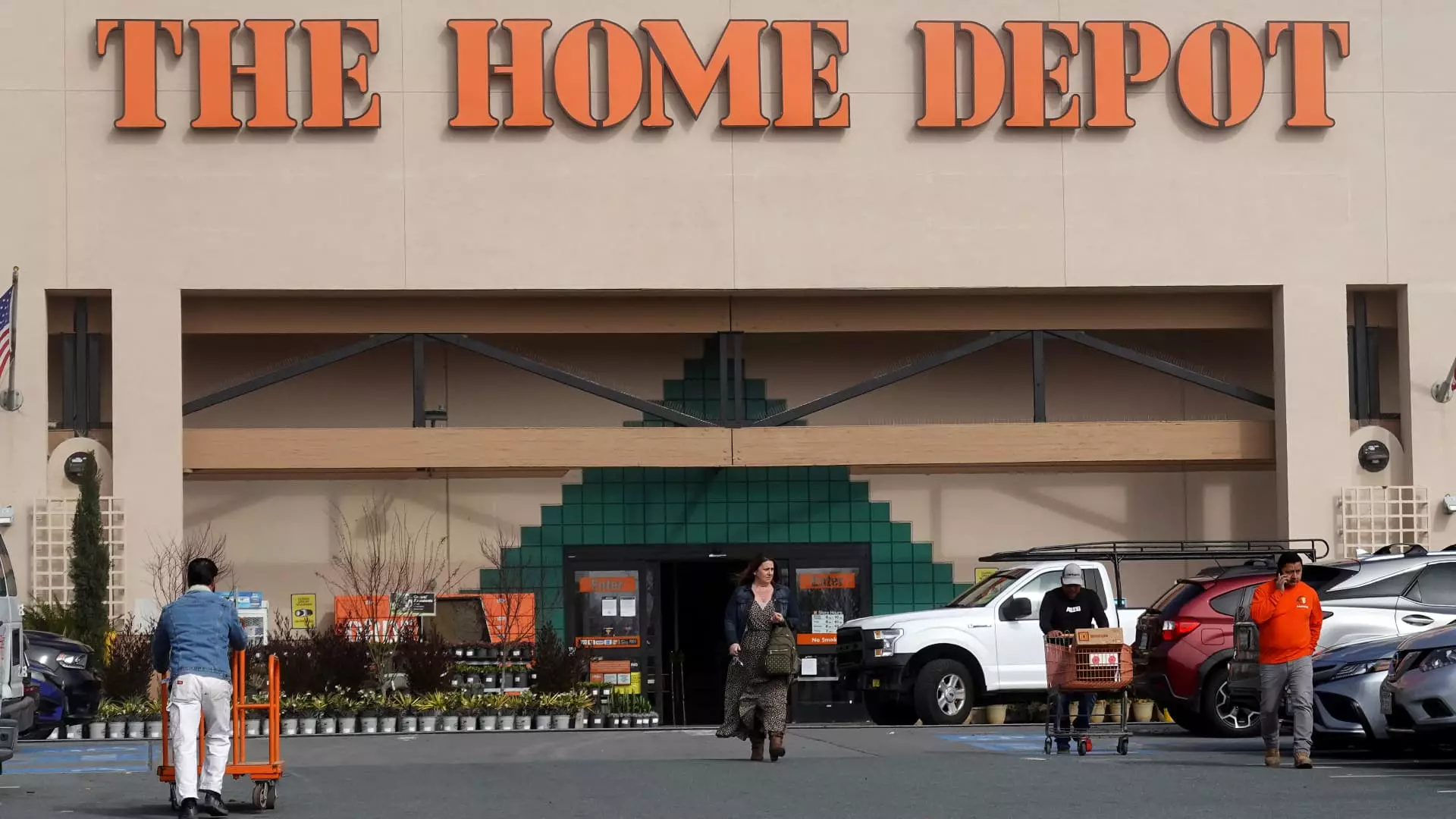As the season transitions into spring, a critical phase emerges for Home Depot, one of the leading players in the home improvement sector. The upcoming Memorial Day sales event is nothing less than a pivotal milestone, often likened to “Christmas” by pundits such as Jim Cramer. Indeed, this period isn’t just about discounts; it’s about strategically positioning the brand amidst fierce market dynamics and consumer sentiment challenges.
The importance of this sales event extends beyond the allure of discounted grills or patio furniture. It signifies Home Depot’s commitment to drawing consumers into bricks-and-mortar locations, capitalizing on seasonal activities like gardening which typically stimulate significant sales. The retail giant’s performance in the garden supplies category, which accounted for over $20 billion in revenue in fiscal year 2024, underscores not only robust consumer interest but also the essential role outdoor sales play in driving overall revenue. However, as summer approaches, the stakes are higher than ever; Home Depot’s Q2 results could make or break investor confidence amid swirling economic uncertainties.
The Upward Surge Amid Likely Headwinds
According to estimates from FactSet, analysts anticipate that Home Depot’s Q2 revenue could witness a growth of approximately 5.3%, a tantalizing figure that may, in ordinary times, inspire buy-in from investors. However, “ordinary times” seem a distant memory. The landscape is rife with challenges including high mortgage rates and ambiguous housing market trends. Mortgage rates hovering just under 7% have sent ripples through buyer confidence, resulting in stagnation.
Despite this, there remains a flicker of optimism. Demand is incrementally rising for larger construction projects, as reported by Morgan Stanley after surveying contractors. This trend could signal a rebound, contingent on the anticipated Federal Reserve rate cuts later this year. Jim Cramer’s observation that mortgage rates need to dip below 6.5% further hints at a critical threshold that could initiate a transformative shift in the housing market.
The Reality Check of Cooling Consumer Sentiment
Home Depot is currently experiencing a dip in its stock, with shares down nearly 2.5% year to date, underperforming against a roughly 1% gain for the S&P 500. This decline is troubling, particularly when viewed through the lens of an impending sales event. Bernstein analysts have flagged potential pitfalls in the upcoming first quarter, pinpointing unfavorable weather and a decidedly weak consumer sentiment as contributing factors to what may be the company’s most challenging season.
The consensus predicts an 8% revenue increase over the previous year, yet the anticipated earnings per share signal a decline. Such a juxtaposition raises questions about sustainability in a market compelled by both seasonal trends and economic realities. The unpredictability of consumer purchases against the backdrop of stubbornly high mortgage rates adds another layer of complexity, not only for Home Depot but for the industry as a whole.
The Political Landscape and Strategic Changes
Positioned as a major player in retail, Home Depot’s fortunes are multifaceted and influenced heavily by broader economic policies and market trends. The looming threat of tariffs, especially in light of ongoing tensions between the U.S. and China, adds a cocktail of uncertainty. However, analysts at UBS have raised a point of intrigue: while tariffs may pose immediate risks, there’s a potential upside that could result in a more robust recovery as conditions evolve.
CEO Ted Decker’s unwavering belief in Home Depot’s ability to navigate these challenges portrays confidence that could resonate with investors. The strategic foresight to adapt, adapt, and adapt again could mean that Home Depot positions itself not just to survive but to thrive as circumstances shift.
A Balancing Act of Opportunities and Risks
Home Depot’s quarterly performance reflects not merely numbers, but intricate narratives that weave through consumer shopping behaviors, economic contexts, and the prevailing political environment. The juxtaposition of strong seasonal sales against detrimental economic indicators creates an intricate balancing act.
While some analysts are optimistic about potential revenue growth and housing market rebounds, it is essential to remain cautious. Home Depot’s trajectory appears increasingly tethered to external influences—rising interest rates, fluctuating consumer confidence, and geopolitical factors like tariffs.
As Home Depot ventures through this critical period shaped by market dynamics and consumer sentiment, it lays bare a bigger truth: companies that can quickly pivot and harness current trends stand a better chance to not just weather the storm but also to carve out their path through it. The question now is will Home Depot harness this opportunity, or will the evolving economic landscape curtail its ambitions? The answer to that lies ahead in this summer showdown.


Leave a Reply